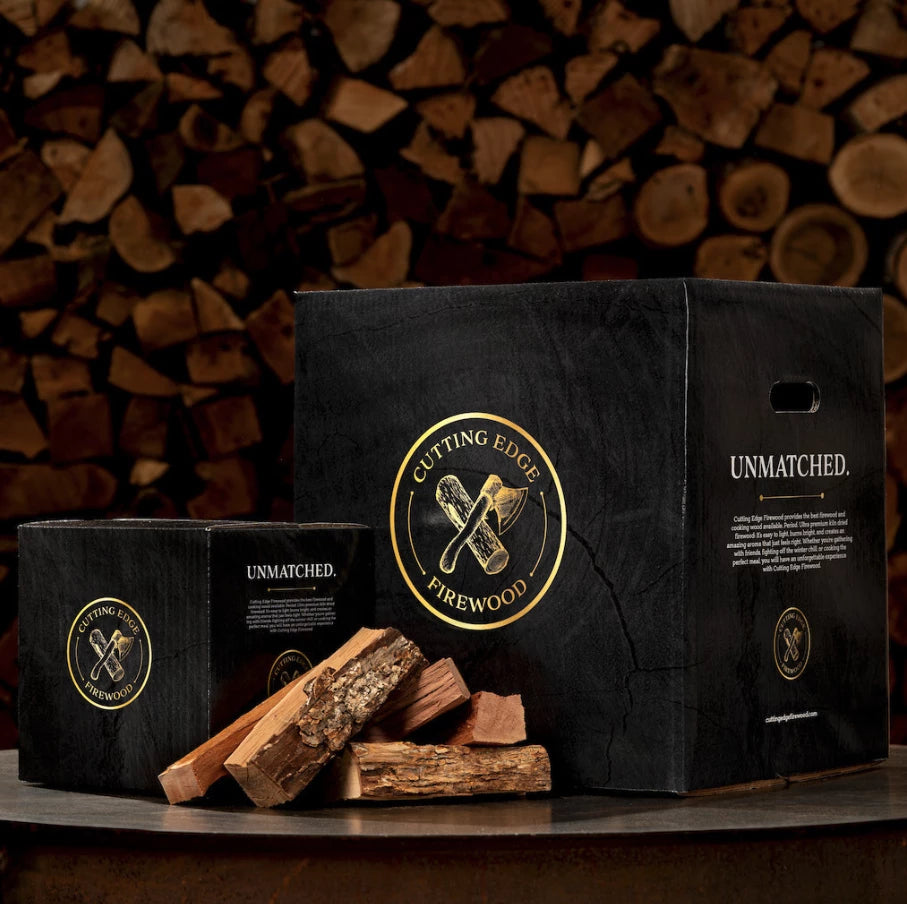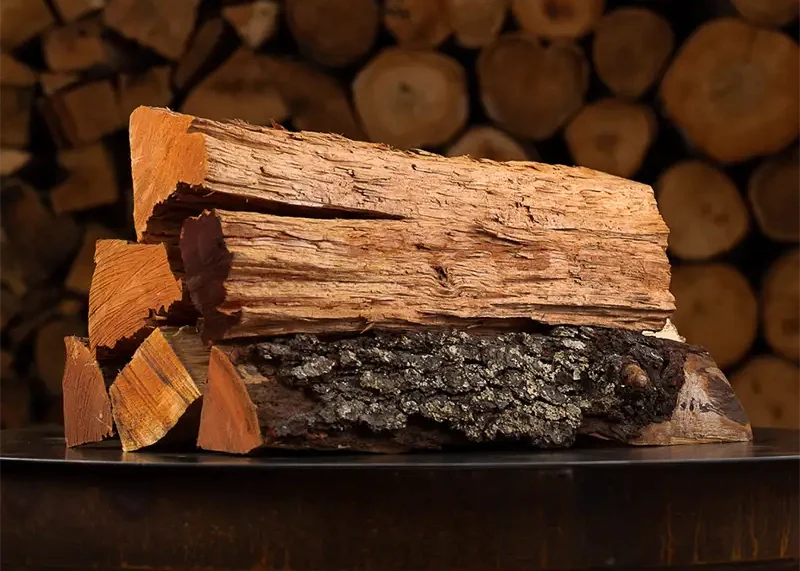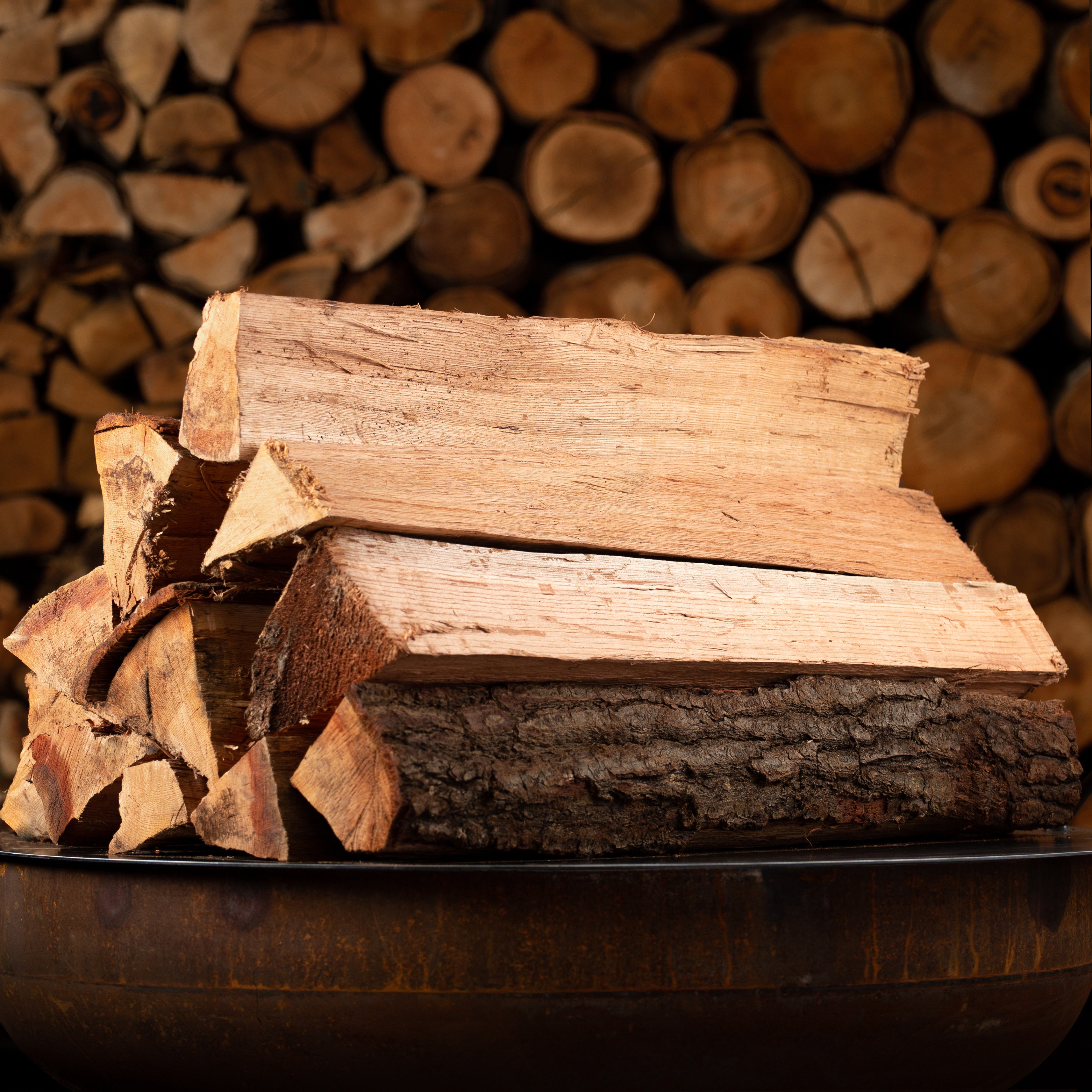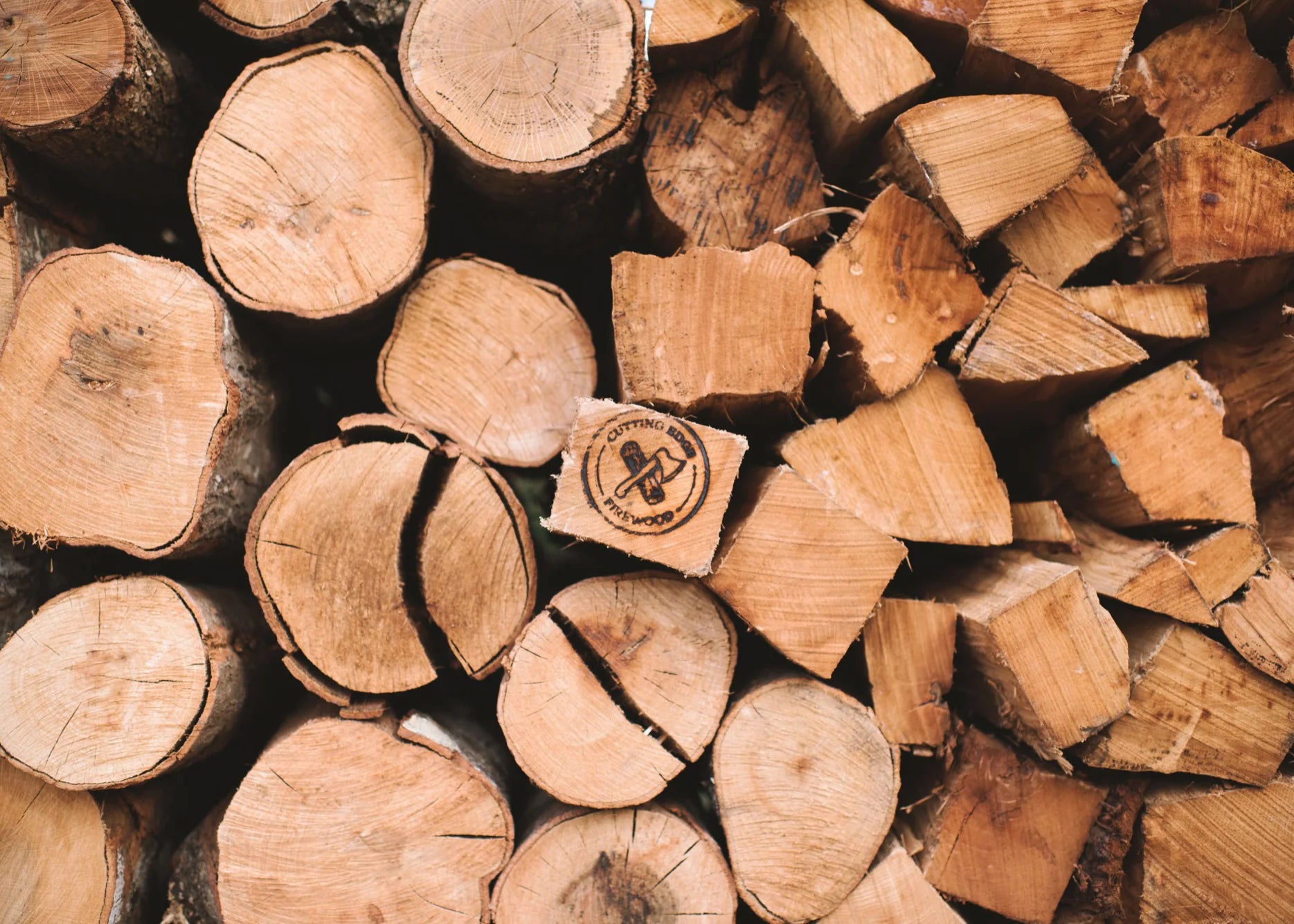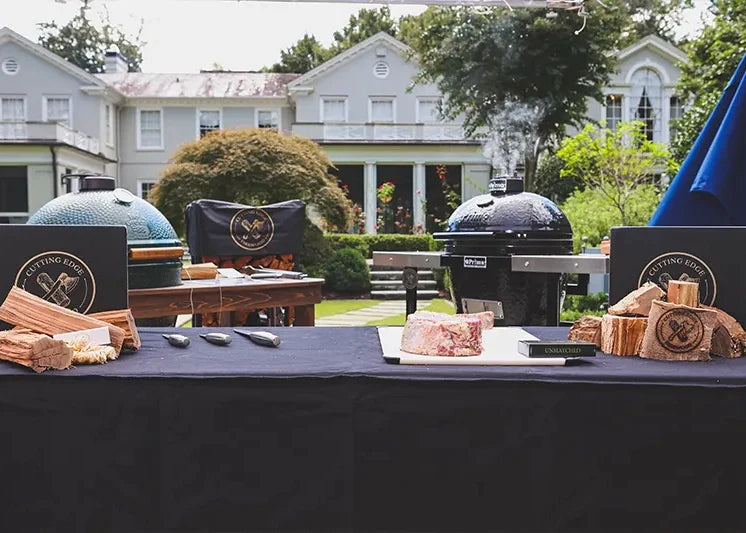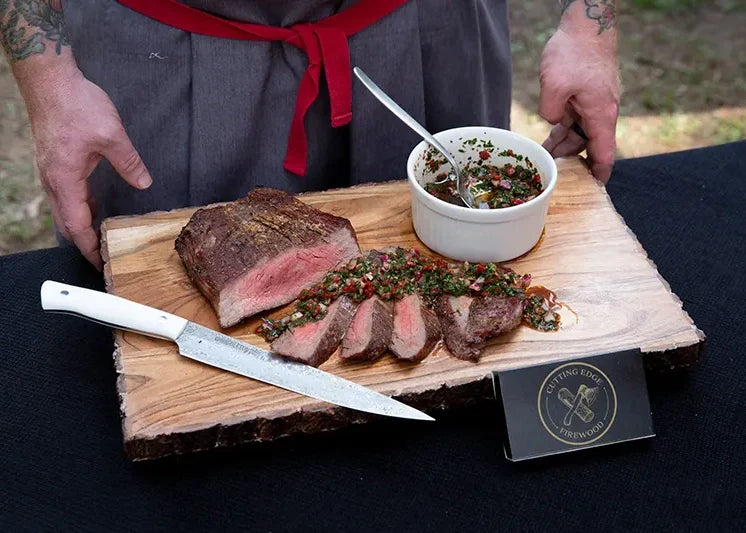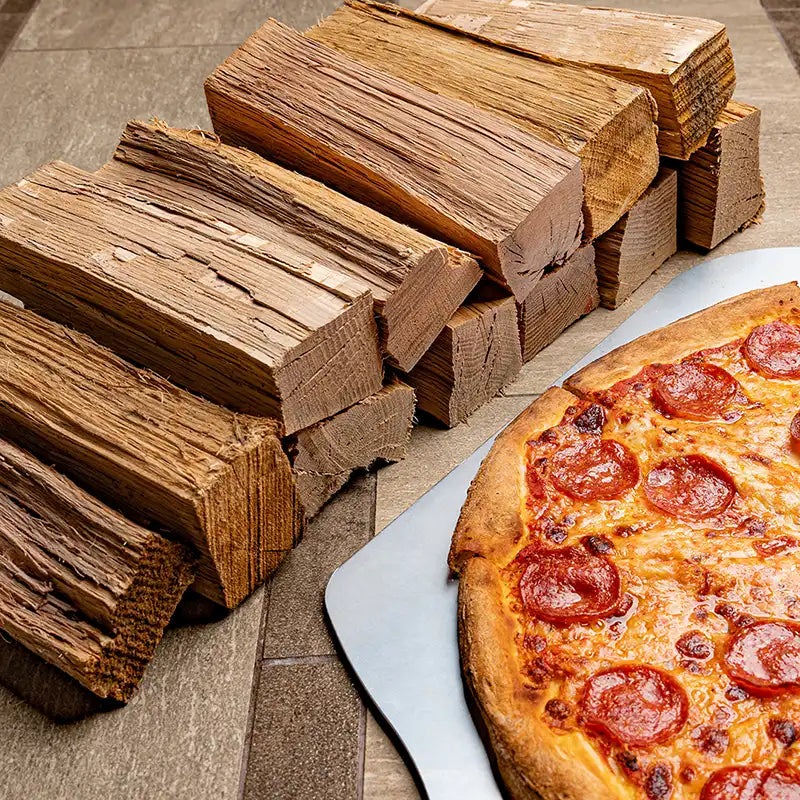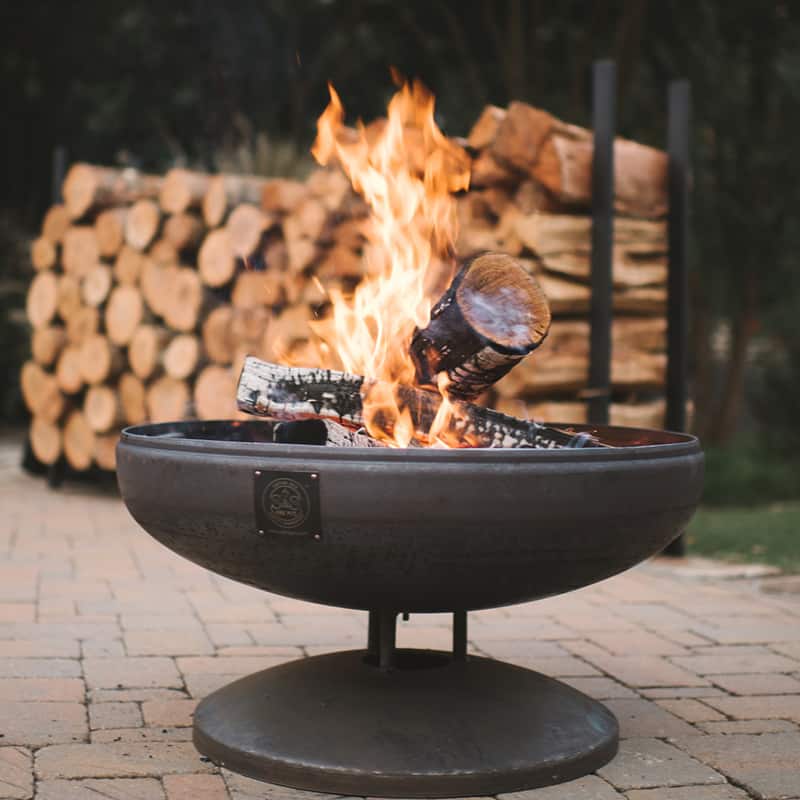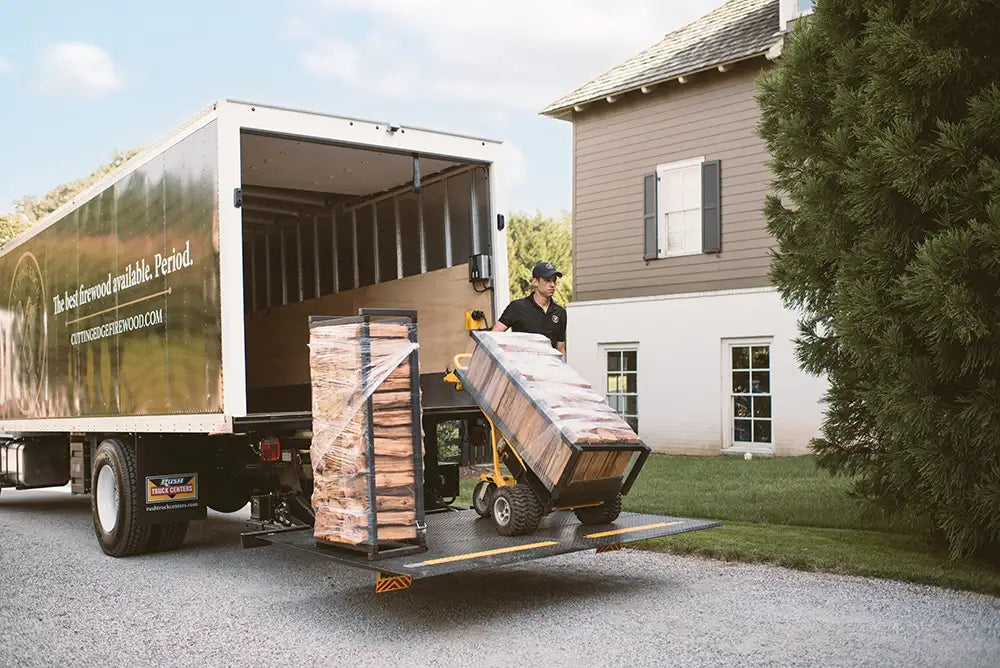As a pitmaster, you might be wondering whether it's safe to cook with bark-covered firewood. The secret to grilling and smoking delicious food is using the right firewood. There are thousands of different tree species, each of which has a unique composition that results in a different flavor. Regardless, nearly all tree species have bark. If you come across a piece of bark-covered firewood when grilling or smoking, though, you don't have to necessarily discard it. To learn more about cooking with bark-covered firewood, including whether it's safe, keep reading.
What Is Bark?
Bark is the outer layer of a tree's trunk and stems. It covers the entire tree, essentially acting a protective shell. While nearly all trees have bark, the composition of bark varies from species to species. Some trees have thick bark, whereas others have thin bark. Some trees have hard and rigid bark, whereas others have soft and elastic bark. By definition, however, bark is simply the organic tissue covering a tree's trunk and stems.
Why Trees Have Bark
The primary purpose of bark is to protect trees from injury and stress. It acts as a physical barrier between a tree's inner core and the environment. Without bark, trees would be susceptible to environmental injury and stress caused by extreme temperatures, wind, fire, pests, disease-causing fungi and viruses, and more. Bark protects trees from these and other related environmental injuries by creating a protective barrier over the tree's core. As long as the bark is intact, trees will have a natural and effective defense mechanism against environmental injury and stress.
It's also worth noting that bark helps trees retain water. When fully grown, it's not uncommon for trees to contain up to half their weight in water. If a tree weighs 1,500 pounds, for example, it may contain up to 750 pounds of water. Most of this water is located inside the tree's core. If the bark is removed or otherwise not present, water quickly leak out, resulting in significant stress that could even kill the tree.
The Myth of Cooking With Bark-Covered Wood
Because bark has a different composition than solid wood harvested from a tree's core -- it's less dense and more brittle -- some pitmasters avoid using it in their grill or smoker. They'll either discard the bark-covered wood, or they'll attempt to manually remove the bark. While it's true that a tree's bark has different properties than its core, this doesn't mean it's a bad choice of fuel for a grill or smoker. Rather, you just need to choose the right type of firewood.
Another reason some pitmasters avoid using bark-covered wood in their grill or smoker is because bark burns quicker than solid wood from a tree's core. This is because bark is less dense than solid wood. Its lower density means bark has less organic matter for the combustion process, resulting in a shorter burn time than that of solid wood. Of course, you probably won't use just bark in your grill or smoker. Instead, you'll use a combination of both bark and solid wood.

Yes, You Can Cook With Bark-Covered Wood!
There's nothing wrong with cooking with bark-covered wood. On the contrary, it can introduce unique flavors that aren't possible with conventional barkless wood. As previously mentioned, bark has a different organic composition than a tree's core. When burned, the unique compounds in bark will produce flavorful smoke that mixes with the smoke of the burned solid wood. As these two types of flavorful smoke combine, they create unique and mouthwatering flavors.
Choose Bark-Covered Wood That Has Been Kiln Dried and Properly Stored
For the best flavor and performance, you should choose bark-covered wood that has been kiln dried and properly stored. If a piece of bark-covered wood hasn't been kiln dried, it's best to err on the side of caution by not burning it.
What is kiln dried wood exactly? As the name suggests, it's any type of wood -- typically a hardwood species like oak, hickory or cherry -- that's dried inside a kiln. There are several different ways to dry wood, the most common of which is air drying. With air drying, wood is left outdoors for an average of six months, during which the moisture inside its pores will escape. Kiln drying is a more advanced drying technique that involves placing wood in an oven-like kiln where it's exposed to heat and pressure. As a result, kiln dried wood contains substantially less moisture than other types of wood, including fresh, green and air-dried wood. By choosing bark-covered wood that's been kiln dried, you'll create a cleaner fire inside your grill or smoker that delivers the best flavor to your food.
In addition to being kiln dried, bark-covered wood should also be properly stored if you intend to use it for cooking. So, what's the best way to store kiln dried wood? There's really no single right way to store it. Some pitmasters prefer storing their kiln dried wood indoors, whereas others prefer storing it outdoors. If you're going to store your kiln dried wood outdoors, however, you should keep it covered and off the ground. If it's stored in the open and/or on the ground, it will absorb moisture. When in doubt, you can always store kiln dried firewood inside your home. Many pitmasters prefer keeping their kiln dried firewood right inside their kitchen where they can easily access it when grilling or smoking food.
Video: How to Choose the Right Wood for Smoking Meat
In the YouTube video below, pitmaster extraordinaire Malcolm Reed offers several helpful tips on how to choose the right wood for smoking meat. Reed explains that wood chunks measuring about 2 to 3 inches work best when used in conjunction with charcoal because of their ability to produce lots of flavorful smoke. You can always use wood chunks alone, but they are particularly effective when added to a mound of hot charcoal. The charcoal will produce the heat to cook your food, whereas the wood chunks produce the delicious flavor that's synonymous with smoking. When using wood as your primary heat source, on the other hand, Reed recommends hardwood logs of a flavorful variety like hickory.
Reed goes on to say that bark on wood chunks adds a "different note of flavor." It's a subtle flavor that's often overlooked by pitmasters. Nonetheless, adding a small amount of bark from kiln dried and properly stored wood can enhance the flavor of your food. Whether you use wood chunks or cooking wood logs, you don't have to worry about bark negatively affecting the flavor of your food.
You can check out the complete video by clicking the play button below. In the roughly three-minute-long video, Reed offers insight on how to choose deliciously flavorful wood for smoking meat.
In Conclusion
It's a common misconception that firewood must be stripped free of all bark before it can be used for cooking. In reality, though, bark is harmless and can even be beneficial. It produces flavorful smoke that mixes with the smoke created by the solid wood. Just remember to choose bark-covered wood that's been kiln dried and properly stored.
Stock up on premium firewood for cooking by visiting our online store today.

